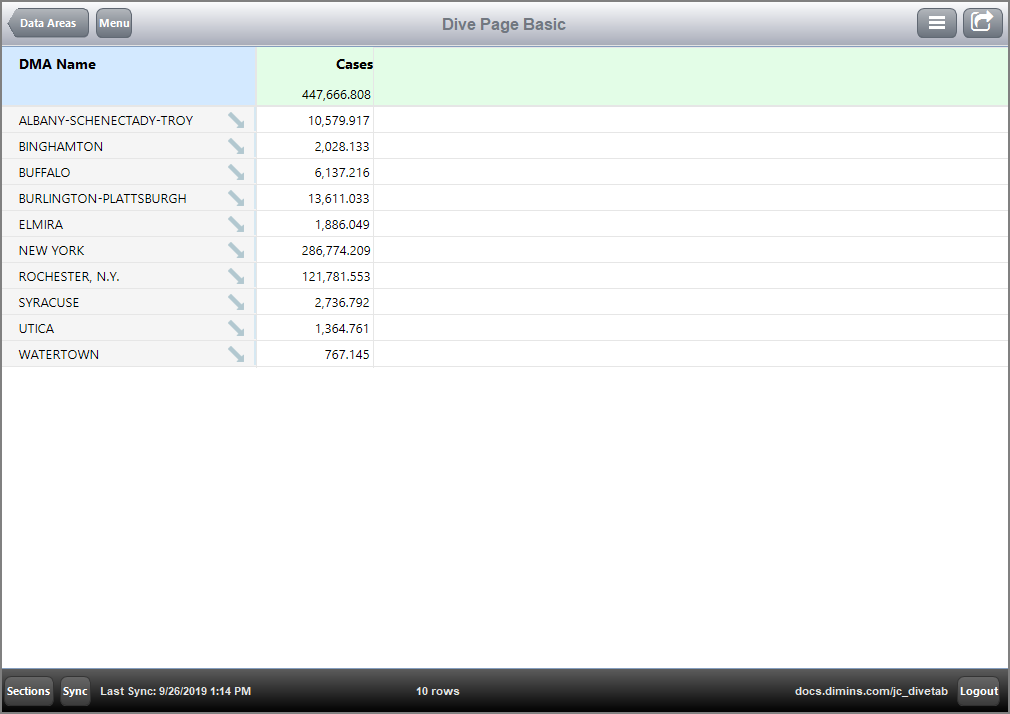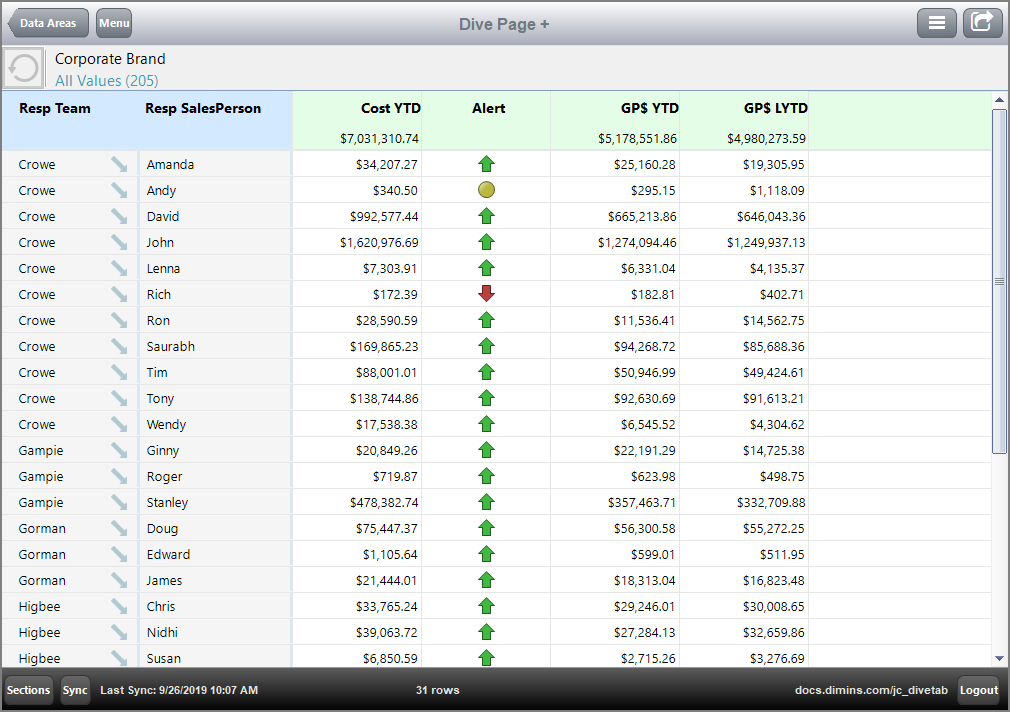The following example creates a dive page with one primary dimension and five Dive Dimensions (dimcount-dimensions).
dive-page {
title "Dive Page Basic"
cplan "/cplans/basic_101.cplan"
dimension "DMA Name"
dimcount-dimension "Product Name"
dimcount-dimension "Corporate Product Group"
dimcount-dimension "Corporate Product Sub Group"
dimcount-dimension "Corporate Supplier"
dimcount-dimension "Corporate Super Supplier"
text column = "Cases"
}
Here is the ![]() result of the code in DiveTab.
result of the code in DiveTab.
The following code example creates a dive page with two dimensions, two Dive Dimensions, one available dimension, a QuickView, and three available summaries.
dive-page {
title "Dive Page +"
cplan "/cplans/basic_101.cplan"
quickview-dimension "Corporate Brand"
dimension "Resp Team"
dimension "Resp SalesPerson"
dimcount-dimension "Corporate Supplier"
dimcount-dimension "Corporate Item"
available-dimension "Corporate Chain"
available-columns {
text column = "Cost YTD"
alert "Alert" {
alert-style "arrow"
value column = "Cost YTD"
low-threshold column = "GP$ YTD"
high-threshold column = "GP$ YTD Y-1"
}
text column = "GP$ YTD"
text "GP$ LYTD" column = "GP$ YTD Y-1"
}
text column = "Cases"
}
NOTES:
-
QuickViews can be included using the quickview-dimension or quickview-set attributes.
-
A QuickView set can use a different cPlan.
-
Available dimensions can be included, and only appear as options in the Edit QuickViews dialog box.
Here is the ![]() result of the code in DiveTab.
result of the code in DiveTab.
Notice that only one dimension includes dive arrows. You can dive once for each row.

